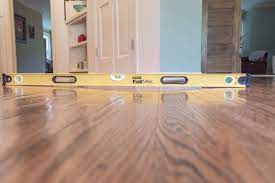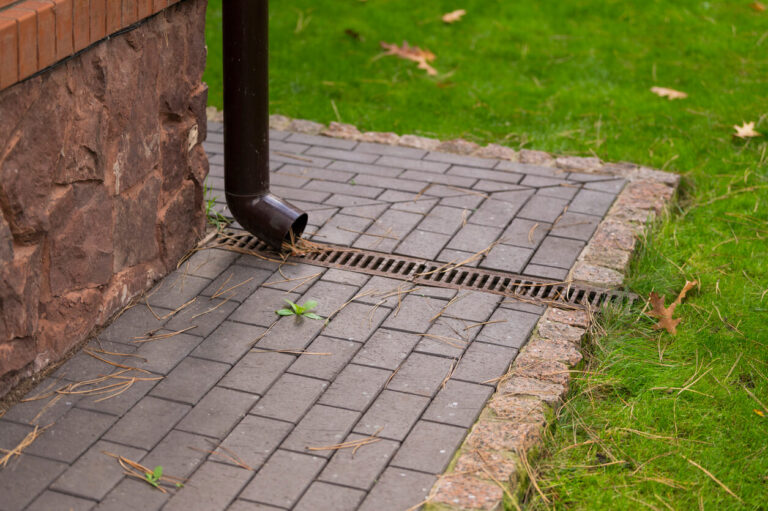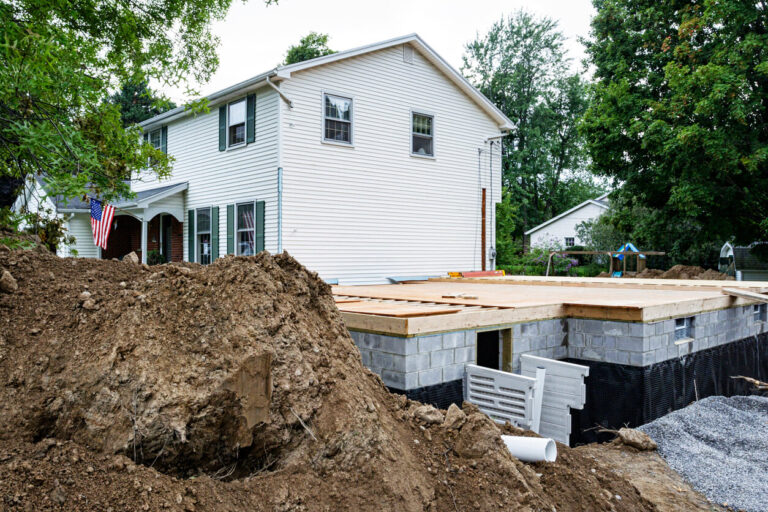A Complete Guide to Floor Foundation Repair and Sagging Floor Solutions
When you notice issues with your home’s floors like sagging, bouncing or uneven surfaces, it can be concerning. **Floor foundation repair** and solutions for **sagging floor** issues are important to address these problems before they worsen and cause further damage. This comprehensive guide will help you identify causes, signs to look out for, inspection tips and various **sagging floor repair** methods professionals recommend. Keep reading to gain knowledge on assessing your flooring situation and making informed decisions.
What Should You Look Out For?
The first step is being aware of potential problems. Some common signs that your floors may need attention include:
-Your windows and doors are becoming loose or sticking more than usual. This indicates your floors are dipping unevenly.
-Pieces of furniture like tables and chairs wobble all of a sudden when previously they were stable.
-Pay attention to any new gaps between floors and interior walls or cracks appearing on walls, especially around door frames. These gaps and cracks may suggest sagging or bowing flooring below.
-Listen for squeaks, bounces or rattles when walking across rooms. Does your lamp shade shake or glasses clink with movement? Noisy floors could mean weak structural support underneath.
-Take note of these warning signs. Catching problems early allows for less invasive and cheaper repairs compared to ignoring issues that progressively worsen over time.
What Causes Sagging Floors?
Several factors contribute to floors dipping or sagging. Understanding common causes helps identify the root problem:
– Damaged or deteriorated support posts holding up floor beams can no longer evenly distribute weight, leading floors above to sink.
– Insufficient support with posts too far apart or too few posts may cause beams to bow down over time under constant pressure.
– Poorly compacted fill soil before laying foundations can settle unevenly as it consolidates, exerting unbalanced pressure on structural elements.
– Standing water, erosion or simply age-related deterioration of soil around posts induces settling.
– Heavy loads like large appliances or structural additions increase stress on existing floor joists beyond their capacity.
Knowing what situations damaged your floors is key when selecting the right repair method. An inspection by a professional offers valuable clues.
How to Inspect for Foundation and Floor Issues
A thorough inspection is recommended whether you plan to DIY repairs or hire professionals. Here are some examination techniques:
– Check support posts visually and prod for soft, mushy rot with a screwdriver. You should note that degraded posts require replacement.
– Inspect floor joists for cracks, splits or signs of insect damage that compromise integrity.
– Look for condensation or moisture patches on floors, walls or undersides indicating damp conditions rotting wood over time.
– Assess foundation settlement by examining windows and doors for misalignment from sagging frames.
– Consider bringing in equipment like string lines, plumb bobs or levels to detect subtle dips not obvious to the naked eye.
Taking your time with inspection identifies the root cause and guides the solution. Professionals can do tests like footing depth measurements for a full diagnosis. Being informed leads to making the best repair choices.
Solutions in Different Home Types
The techniques used to resolve floor foundation and sagging floor problems depend on your specific home construction. A qualified inspector can recommend the best approach.
In homes with basements, localized column jacking may lift just the drooping area back into alignment. Basement floors made of concrete are easier to reinforce with additional structural mesh or rebar if needed.
For houses with crawl spaces, supporting structures underneath are more accessible. Sister joisting commonly repairs a few sagging floorboards above by doubling up on load-bearing strength in the crawl area.
Older homes sometimes use short supporting posts where tall poured concrete piers would distribute weight better in modern builds. Retrofitting with reinforced piers prevents future settling issues.
It doesn’t matter if you live in a single family home, condominium or other multi-unit building, the principle solutions are dependent on the load-bearing integrity from foundations up. With the right repair methods for your type of construction, stability returns.
How Are **Sagging Floors** Fixed?
Depending on the cause, techniques for **sagging floor repair** differ. Here are some common options:
Basements & Crawl Spaces
– If floors sag near edges, underpinning with push/helical piers lifts settled areas.
– Middle sagging likely needs sistered or new beam/joist reinforcements as steel jacking resists further bowing.
– Ensure proper drainage and foundation waterproofing prevent future settling issues.
Slab Foundations
– Edge sagging repairs involve underpinning to stabilize sunken concrete.
– Middle sinking may have soil voids underneath filled in via polyurethane injection.
All Foundations
– Sistering installs a new, identical beam alongside the damaged one for extra support.
– Bridging or X-bracing distributes weight loads between joists more evenly.
– Structural jacks or screws temporarily boost floors until permanent solutions set.
Professional assistance picks the ideal methods. Improper DIY fixes may worsen problems or risk structural integrity. Their expertise leads to long-lasting, stable repairs.
What if You Notice Sagging Floors?
If you spot any signs of uneven floors in your home, address problems promptly before further damage occurs:
– Contact licensed flooring inspectors experienced in structural diagnostics right away. Their skill finds root causes.
– Resist tampering or jacking without guidance. Improper techniques can damage foundations.
– Prepare for repairs by clearing workspaces. Temporarily remove wires, pipes or corbels in joists’ way.
– Follow experts’ advice on necessary preparatory tasks like crawl space drying and additional bracing.
– Budget repairs properly based on expertise is recommended rather than DIYing major structural replacements. You must note that safety comes first.
Don’t ignore sinking floors assuming small dips aren’t serious. Floor foundation issues will only worsen without timely fixes so it is of grave importance to trust licensed specialists for quality **sagging floor repair** solutions as your home’s integrity depends on it.
DIY Solutions or Call a Foundation Professional?
Many basic floor sagging fixes require only tool use, building materials and patience. Perfectly reinforced joists , braces or supports may make a wobbly floor smooth again if issues are contained. However, some foundation repairs demand expertise to ensure safety and code compliance.
Simple techniques like sister joisting or adding bracing within crawl spaces are reasonable for DIY-ers. Go slowly and methodically to limit new creaks or squeaks, take accurately measured material dimensions and double check structural placement.
For anything related to major load-bearing foundations, contact licensed foundation contractors. They’re trained to properly diagnose root problems, permitting requirements and structural safety. Crews know efficient repair techniques while avoiding liability if foundational work goes wrong.
Complex jobs needing underpinning, heavy machinery operation or major floor restructuring exceed most DIY skill levels. Severely damaged or old settling foundations also warrant professional foundation repair companies for guaranteed permanent fixes. With the right approach, even long-standing floor foundation sagging issues have solutions.
How to Prevent Future Foundation Failure
While correcting current issues, consider additional preventive measures. Many foundation and floor problems stem from excess moisture. You can control water sources to avoid future damage by:
- Grade soil slopes water away from your home’s perimeter.
- Install seamless flashing and waterproofing around foundations.
- Ensure gutters direct rainfall at least 5 feet from your home.
- Inspect basement or crawlspace drain tile systems for clogs.
- Keep wood at least 6 inches off bare ground with spacers.
- Routinely check for leaks, dampness or other moisture ingress points.
Following basic upkeep tasks prevents foundation wood from rotting under constant ground moisture exposure over long periods. Addressing issues early helps too before they require extensive repair work.
Preserving Your Home’s Structure and Value
No one wants a home with bouncy creaky floors or foundations continually settling into uneven droops. Taking care of these structural issues prevents headaches down the road so your living spaces stay level, balanced and intact.
Cosmetic fixes eventually crack under pressure as foundational settling continues its effects above. Adequately resolving the root cause is key. You can do this by proper floor foundation reinforcement and load transfer through bearing pilings, braces and joining techniques and save much bigger repair costs years later.
Addressing problems promptly maintains your home’s structural life expectancy too. Well-built houses endure decades longer with responsible maintenance and timely repairs that preserve the entire system’s integrity. Strong bones lay the groundwork for enjoying a home comfortably into the future with resale value retention as well.
Years from now when reflecting on homeownership lessons, you’ll appreciate properly solving structural issues early instead of deferring necessary maintenance. Implementation may take gradual effort but keeps your home standing tall with supportive flooring anchored atop solid foundations. Make structural preservation a priority – your investment returns the favor tenfold.
In Conclusion
Paying attention to early flooring issues avoids costly foundation repairs down the line. Understanding common causes and warning signs will enable you to accomplish proper assessment. In addition, sagging floor solutions depend on inspectors accurately pinpointing underlying problems. So, it’s in your favor to consult with trained flooring experts that will result in long-lasting remedies protecting both structural stability and home investments. Their extensive knowledge leads to diagnosing floor foundation issues comprehensively for safe, compliant repairs upholding building codes. With diligent maintenance, foundation repairs hopefully remain a one-time fix.






